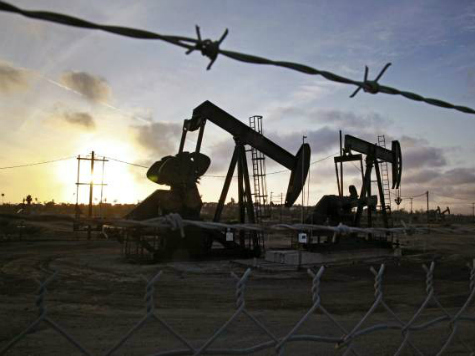
Prior to this week, estimates suggested there were over 13 billion barrels of recoverable oil in California’s Monterey formation. Now a new report, being seized on by environmentalists hoping to see a fracking moratorium in the state, suggests the true amount is substantially smaller than previously believed.
Word of the new estimate was published in the LA Times Tuesday. The U.S. Energy Information Administration will reportedly say in a report published next month that justjust 600 million barrels of gas and oil are recoverable using currenttechnology. That’s a 96% drop from a 2011 estimate which put the figureat 13.7 billion barrels.
The earlier estimate set off a boom in speculation as companies sought toposition themselves for a natural resources boom like the one in NorthDakota’s Bakken formation. Now the new estimate, based on actualproduction of fracking wells in California, suggests the geology of theMonterey deposit makes it largely inaccessible to current technology.
TheMonterey Shale, which reaches from San Francisco to a point midwaybetween Los Angeles and San Diego, differs from shale deposits in Texasand North Dakota. Those deposits are in shale which is “layered like a cake” while the Monterey formation has been “folded and shattered by seismic activity.”
Environmentalists jumped on the new report. Tom Steyer, the liberal billionaire who has vowed to raise $100 million for Democratic candidates this year, called on Governor Jerry Brown to hold an “Energy Summit” in California in light of the new information. Steyer’s group, NextGen Climate, has been pushing for a new tax on oil extraction and for a statewide moratorium on fracking.
In Steyer’s letter to Gov. Brown requesting the Summit, he wrote, “Now is the time to act, and I urge you to convene stakeholders–from the oil industry and the clean energy, environmental and scientific communities, as well as local citizens–for an historic California Energy Summit to make sure that California gets a Fair Shake.”
The phrase “Fair Shake” is capitalized in the letter because it is the name of Steyer’s petition drive to add an energy extraction tax in California. A bill containing the new tax, SB 1017, was introduced in February by State Sen. Noreen Evans. It would add a 9.5% tax to any oil or gas extracted in California, increasing state tax revenues by as much as $2 billion. The bill is similar to one which died in the appropriations committee last year.
Meanwhile the oil and gas industry is not giving up on the state. The Western States Petroleum Association reacted to the news by emphasizing the fact that technology can change, meaning how much oil is recoverable will also change over time. In a statement posted on its website, the group’s President Catherine Reheis-Boyd said, “We have a great deal of confidence that the skill, experience andinnovative spirit possessed by the men and women of the petroleumindustry will ultimately solve this puzzle and improve production ratesfrom the Monterey Shale.”
So is this the end of fracking in California as Tom Steyer hopes, or is it just a setback as the Petroleum Association suggests? The director of the University of California Energy Institute took a middle ground, telling the San Jose Mercury News, “this is definitely a hugesetback to the expansion of oil production in California, but I wouldnot at all say the game is over… It is way too early to say thatthis is the death of fracking in California.”
Governor Brown has also tried to find a middle-ground in the past. He has refused environmentalists’ calls for a moratorium on fracking in California, but he did sign new regulations governing the process last fall. Gov. Brown has yet to respond to Steyer’s call for a summit.

COMMENTS
Please let us know if you're having issues with commenting.